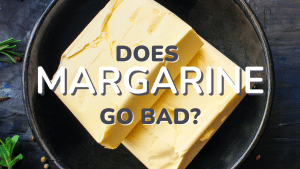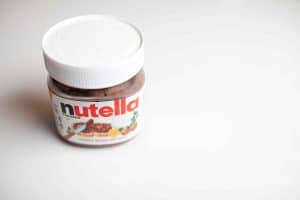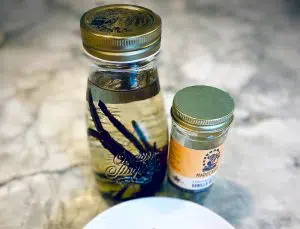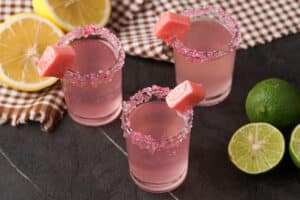Does Cranberry Juice Go Bad?
Important Note: When you buy through our links, we may earn a commission. As an Amazon Associate we earn from qualifying purchases. Content, pricing, offers and availability are subject to change at any time - more info.
Cranberry juice is a nutritious and refreshing beverage full of antioxidants and vitamins. But what if you’ve got an open bottle or carton that you can’t seem to finish? Does cranberry juice go bad?
Cranberry juice is a fresh, perishable item, so it does go bad. How long the juice will last depends on the juice blend you have purchased, whether it has been pasteurized, when you opened the bottle or carton, and how you store it. To prevent cranberry juice spoiling, refrigerate or freeze it.
Whether you keep cranberry juice as a cocktail mixer, an addition to your morning smoothie, or for the kids’ lunch, it is a fresh fruit item, so you can’t keep it indefinitely. How long before cranberry juice expires? How should you store it to keep it fresh?
- Can Cranberry Juice Go Bad?
- How Long Does Cranberry Juice Last?
- How Do You Know It Has Gone Bad?
- How To Store It To Prevent It Going Bad
- So, Does Cranberry Juice Go Bad?
Can Cranberry Juice Go Bad?
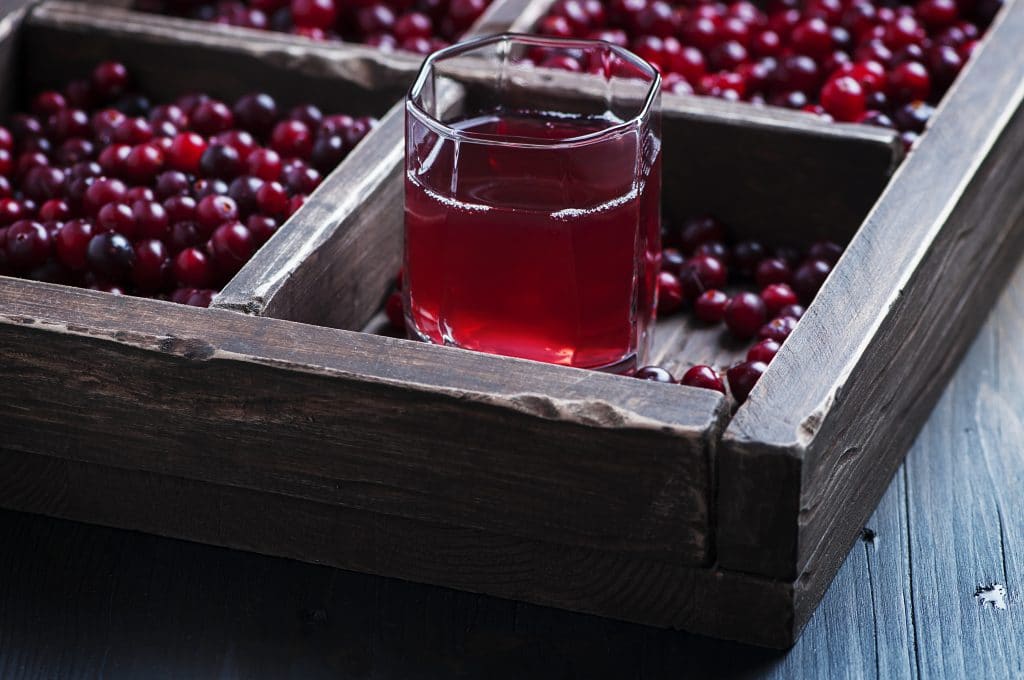
Because it consists of juiced berries, which are fresh fruit, cranberry juice does go bad.
No matter how well you store fruit juice, it will be affected by bacteria, yeast, mold, or other enzymes, or the natural sugars will begin to ferment, making it unsafe to drink after a while.
Because of its high acid content, cranberry juice, like orange juice, lasts a little longer than other juices before it goes bad. However, it will still spoil.
How Long Does Cranberry Juice Last?
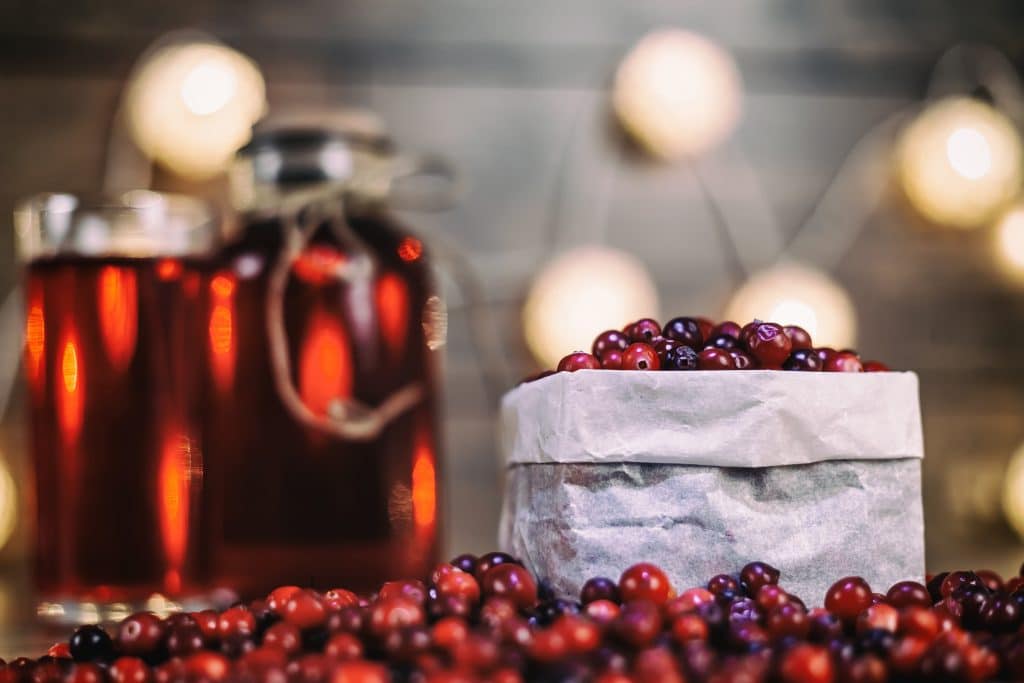
Cranberry juice will always come with an expiration date on the packaging to indicate how long the juice will last. This date is there for the consumer’s safety and will show either a use-by date (use by this date or the beverage will go bad) or a best-before date (a broader period indicating loss of quality).
How long you can keep cranberry juice before it becomes unfit to drink will depend on the following:
- What are the ingredients of the brand of juice?
- Has the juice been pasteurized?
- What is the expiration date (use by or best before)?
- Is the juice opened or still sealed?
- How are you storing the juice?
The Role of Preservatives and Pasteurization
Cranberry juice’s ingredients will depend on the brand you buy, which in turn influences how long before the cranberry juice goes bad.
Freshly squeezed or pressed cranberry juice will last the shortest time, only one to two days in the fridge. Fresh juice spoils quickly if left at room temperature, even for a couple of hours, even if you have made it yourself.
You may also make homemade cranberry juice by cooking juice and sugar, whether pure cranberry or a blend of juices (usually orange, lemon, grape, and apple). This juice will also only last for a few days in the fridge and shouldn’t be left at room temperature.
You will always find freshly squeezed 100% stored in the fridge, whether you’re buying it at a supermarket, health store, or farmer’s market. Because this juice has no additives, it will usually come with an expiration date marked “use by.” This date is not negotiable as the liquid contains no preservatives to lengthen its shelf life and likely has not been pasteurized.
Most commercially sold cranberry juice is not pure juice. It is often a blend of juices, described as a cocktail or juice beverage, with as little as seven percent juice. These juices always contain preservatives and additives, even if just sugar, to temper the juice’s tartness, which will increase their shelf life. They are also usually pasteurized. The pasteurization process involves heating or freezing the juice to a temperature that kills bacteria – this process can destroy vitamins and minerals. Still, these juices or fruit beverages will last longer.
The US Food and Drug Administration (USFDA) emphasizes the importance of pasteurization to prevent contamination of fresh fruit juice and suggests that children and people with compromised immune systems should only drink pasteurized juice. The juice industry is highly regulated, with food hygiene and safety laws. For example, unpasteurized fruit beverages have to carry warning labels that explain the lack of pasteurization, that bacteria may be present, and that these may cause illnesses in children and the elderly.
Opened Vs. Unopened Juice
How long cranberry juice will last is also influenced by whether the container is opened or still sealed. (This won’t apply to homemade or freshly squeezed juices, as they don’t have preservatives.)
For other commercial brands, so long as the juice is sealed in a bottle, can, or carton, you can be guided by the expiration date (best before) printed on the packaging. In an expiration date, the first two digits are the day, the month is written out, and the second two digits, the year. This is not the same as a use-by date but indicates how long you can drink the juice before its quality begins to decline.
An unopened bottle or carton of commercially sold, pasteurized cranberry juice should last up to nine months past the best-before date if stored in the fridge or a pantry at room temperature, so long as it is completely sealed. The juice will remain safe to drink, but the quality will decline. Always check whether the beverage is still fit to drink before consuming anything beyond its best-before date.
However, once you open your cranberry juice, you will need to refrigerate it. The liquid will remain fresh for ten days to two weeks at the most, whatever the best-before date indicates. Even though most of these juices contain preservatives, you should not store them in a pantry or larder at room temperature once you open them or break the seal.
You can freeze unopened cranberry juice, in which case it will stay fresh for three to six months. However, freezing juice does lead to a loss of nutritional value, so it is not ideal for freshly squeezed juice. Canned cranberry juice concentrate is your best bet for extended shelf life in the freezer, as it will last for a year.
How Do You Know It Has Gone Bad?
Cranberry juice starts going bad when the natural sugars ferment or when bacteria enter the liquid.
The most obvious signs of spoilage in juice are:
- change in color of juice or shape of the container
- sour smell rather than tart, fresh smell
- rancid flavor.
Appearance
The first clue that the juice is past its best will be the appearance of the container. If the container is leaking and sticky, discard it immediately.
If the carton is bulging or the bottle’s lid is puffy, chances are the juice has gone off and begun to ferment. The gases released during fermentation cause the container to bulge and puff up. Any bubbles in the liquid (unless carbonated) also indicate fermentation. Do not open or drink the juice — throw it out.
Another clue is mold, which shows that the cranberry juice is spoiled. Do not drink any juice with mold growing on it or the container, even if it is not on the liquid itself, as you can become ill. Discard it immediately.
The color of the juice itself may change if it is contaminated. Cranberry juice should be a bright, clear red with a thin texture. If the juice is becoming darker, thicker, and discolored, this is a sign of spoilage.
Sometimes there is separation in cranberry juice, and it will look like sediment floating in the bottom. This slight separation is normal for cranberry juice — just shake it. If you find no other obvious signs of spoilage (such as an unpleasant smell or taste), the beverage is probably safe to drink.
Smell
If the juice looks okay but smells sour (like wine or vinegar) or yeasty (like beer), these are also signs of spoilage and fermentation. Do not consume the juice, but instead throw it out.
Taste
When the juice looks and smells okay, but you’re still concerned about spoilage, take a tiny sip of the juice. Cranberry juice is naturally tart, but if it tastes sour, rancid, or unpleasant, then rather not take a chance. Discard the juice.
What Happens If You Drink Bad Cranberry Juice?
Never drink cranberry juice past its use-by date or if opened and left at room temperature.
According to the USFDA, most foodborne illnesses will manifest within 20 minutes to a day of consuming the contaminated food. However, foodborne illness can appear as long as six weeks after consuming contaminated food.
If you do drink any juice that you think may be past its best, look out for these symptoms of a foodborne illness:
- vomiting
- diarrhea
- stomach pain
- fever
- headache.
Contact your local doctor or hospital immediately if you think that contaminated cranberry juice has made you ill. Food poisoning is dangerous and can impact your long-term health.
How To Store It To Prevent It Going Bad
The best way to avoid your cranberry juice going rotten is to store it correctly.
Freshly Squeezed Cranberry Juice
Freshly squeezed cranberry juice has the shortest shelf life of only 24 to 48 hours, no matter how well you store it.
- Unless you are drinking it, store fresh juice immediately after juicing.
- Ensure that any juice is in a sealed container. Keep freshly squeezed juice in a sealed glass or metal container for the most extended shelf life as this will prevent oxidation which leads to spoiling. Fill the container to the brim so that air cannot enter the container and contaminate the juice.
- Do not drink directly from the juice container as this transfers bacteria from your mouth to the rest of the juice, which will contaminate it and cause it to go bad. Pour a glass when you want some juice.
- Any bottled cranberry juice that you found in the fridge at a store needs to be refrigerated at home. It is best to transport fresh juice in a coolbox or bag and to place it into your fridge once you get home.
Regular Cranberry Juice
Most cranberry juice or juice-type beverages you buy contain preservatives and have been pasteurized, so they will last longer than freshly squeezed juice.
- Ensure that all cartons, cans, or bottles remain sealed.
- Store cartons or bottles that do not need to be refrigerated in a pantry or cupboard, preferably in a cold, dark place. Exposing the juice to heat and sunlight can accelerate the growth of any bacteria in the juice. You can store juice like this for up to nine months.
- Keep any opened cranberry juice in the refrigerator in a sealed container and drink it as soon as possible, within a week at least. Decant liquid from a can into a fridge-safe, sealed container — do not place the open can in the fridge.
Freeze Cranberry Juice
The best storage choice to ensure the most extended possible shelf life for cranberry juice is freezing.
- Freshly made cranberry juice needs to be cooled and then transferred to sealed, freezer-safe containers before freezing. Homemade juice lasts only three months in the freezer
- Before freezing, most commercially sold juice in bottles needs to be transferred to a sealed freezer-safe container. Keep the beverage in the freezer for three to six months.
- Ensure that there is space for the juice to expand while freezing: don’t fill the container to the brim.
- Store juice in cartons in the freezer. Frozen juice boxes are an excellent addition to a kid’s lunchbox as they keep the other food cool and make a refreshing beverage.
- Freeze cranberry juice in ice trays for flavored ice cubes to add to summer beverages or smoothies.
- Freeze canned cranberry juice concentrate for up to a year.
- To thaw frozen juice, put it in the fridge overnight. Drink the thawed juice within a week.
So, Does Cranberry Juice Go Bad?
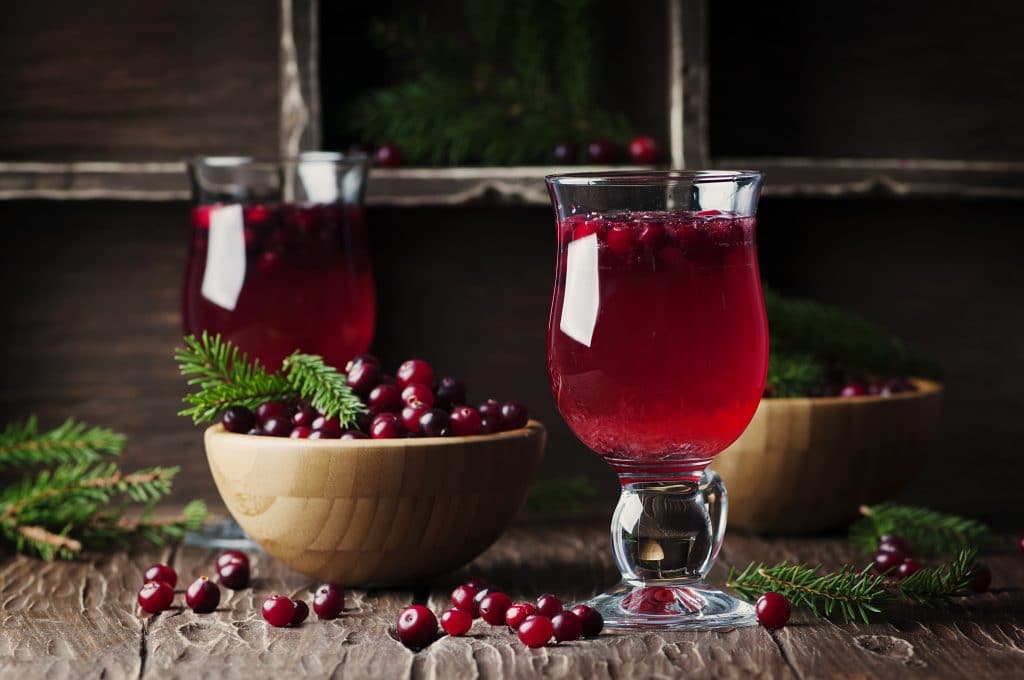
Like any other fresh product, cranberry juice does go bad. How long the juice will last depends on the juice’s ingredients, whether it has been pasteurized, and how safely the juice has been stored. Always keep fresh juice in the refrigerator and drink it as quickly as possible.


